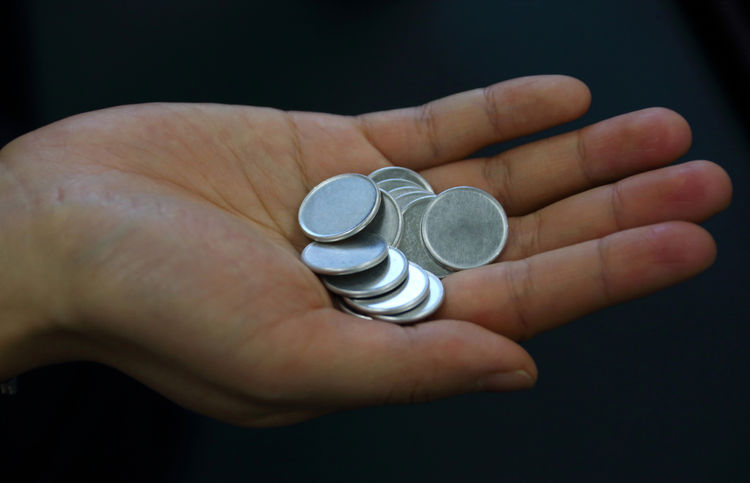It’s a little hard to know where to start today after a massive risk aversion wave swept markets overnight, so let’s start where I believe the rot really began, the Bank of England policy decision overnight. The Bank of England raised rates by 0.25% to 1.0% in a split decision (three members wanted 0.50%), which was in line with expectations. It’s what they said, and not what they did, that saw Sterling slump by 2.0%. The bombshell was the 2023 growth forecast, which was marked down massively to -0.25% from 1.25% previously.
The BOE basically said there was going to be a recession next year, somewhat at odds with the Federal Reserve’s statements that a soft landing was possible in the US. Overnight BOE officials basically said they were going to concentrate on tackling inflation because there wasn’t much, they could do to offset a slowdown. UK consumers would, unfortunately, have to endure rising costs of living and recession headlock that would make Stone Cold Steve Austin proud. It is of little surprise that the BOE doesn’t intend to start reducing its GBP 875 billion balance sheet yet. The only positive being the BOE will likely hike rates in small increments and let markets themselves do most of the dirty work.
That is somewhat at odds with Fed Chairman Powell’s comments that the Fed would be able to engineer a soft landing for the US economy as it scrambles to get on top of inflation. Given the economics PHD’s were adamant that inflation was “transitory” last year, I’m struggling to fully buy into that, and so it seems, is the street. I argued yesterday that hiking rates by 0.50% a meeting while scaling up quickly to sell $95 billion of bonds and MBS’ a month off their balance sheet wasn’t dovish at all. Also, Mr Powell’s comments had left plenty of wiggle room to hike by 0.75% if needed. 0.50% hikes could be as “transitory” as inflation. Markets seemed to come to that realisation overnight, US 10-year yields climbed back through 3.0% and stayed there, and everyone knows about the bonfire in equity markets.
The Reserve Bank of India blinked on inflation this week as well with their unscheduled rate hike. I actually applaud them for this, there’s no shame in effectively admitting you were incorrect and acting decisively to sort the mess out. Even an ECB member said overnight that a rate hike would be considered at the June meeting. Considering and doing are two different things though, although if EUR/USD is around parity, their thoughts might be focused. However, their rightful get-out-of-jail card is that they are rapidly moving to oversight of a pseudo-wartime economy.
Master fence-sitting vacillators, the Reserve Bank of Australia, though, haven’t made too many friends with their guidance. Hiking rates by 0.25% earlier this week, while still playing the dovishly hawkish card. The RBA Statement of Monetary Policy this morning though, told a rather different message and I’m wondering if they were hoping nobody was watching because it’s Friday. It massively raised trimmed mean inflation forecasts to 4.75% by December 2022, and 3.25% by December 2023, with core-inflation remaining above the 2-3% target band until 2024. It said it was appropriate to start normalising interest rates and that further increases would be needed to restrain inflation. Australian equities would have been battered today after the Wall Street slump overnight anyway but would probably have suffered a similar fate anyway after the RBA SoMP release.
Slowly but surely, the central bank fence-sitters are being dragged into the inflation fight, even if they are fighting dovish rear guard actions. The reality that inflation has returned to the world after 20 years, that the 15 year run of the cost of capital is zero per cent is over, or that we can no longer rely on central banks to reverse flow wealth transfers to homeowners and equity investors and corporate debt Caligula’s via quantitative easing, appears to be dawning on the world. We may well have reached peak globalisation and with China slowing, a process in place pre-covid-zero I might add, and a war in Eastern Europe that will price shock the worlds food and energy value chains, it is little surprise that equity markets might be having second thoughts about valuations, even at these levels.
And still, the week isn’t over, with US Non-Farm Payrolls still to come. Market expectations are for around 400,000 jobs to be added, roughly the same as March, with unemployment edging lower to 3.50%. A sharp divergence, up or down, from the median forecast, should produce a very binary outcome given the schizophrenic nature of the short-term financial markets at the moment. A print north of 500,000 should provoke a faster tightening by the Fed possible recession equals selling equities, bonds, gold, cryptos, DM and EM FX, buy US Dollars reaction. Conversely, a print under 300,000 should see a sigh of relief less Fed tightening rally. Buy equities, bonds, gold, cryptos, DM and EM currencies and sell US Dollars. It’s that sort of market.
Thankfully, most of us still have our weekends free, but if one wants to watch the direction of travel for market sentiment, the crypto-space this weekend might be interesting to watch, especially if we get some headline bombs. Bitcoin held support perfectly ahead of support at $37,400.00 on Wednesday, rising 5.20% in the general post FOMC relief rally. Overnight, it lost around 8.0% and traded as low as $35,600.00, crashing through the triangle support at $37,400.00. Negative developments over the weekend could spur a sell-off to around 32,000.00 settings Monday up for a bad start. If risk sentiment continues plummeting, the chicken bones on the technical charts suggest Bitcoin could be on its way to $28,000.00 and then 20,000.00. HODL on for dear life.
New York slump sends Asian equities lower.
New York equity markets did a massive volte-face overnight and decided that Jerome Powell had been hawkish after all and that higher rates and recession risks were a higher possibility. The Wednesday relief rally vanished into thin air as US stock markets saw every sector in every index get thrashed. The S&P 500 tumbled by 3.55%, the Nasdaq was battered 4.99% lower, while the Dow Jones retreated by 3.12%. In Asia, US futures on all three major indexes are still catching their breath, easing by around 0.10%.
Japan is the only Asian market bucking the trend today, returning from the Golden Week holidays and pricing in a week’s worth of stock market volatility. That has allowed the Nikkei 225 to record an anaemic 0.63% gain today, helped along by a slumping Yen. South Korea’s Kospi returns from a one-day break, but that is no solace as it falls by 1.22%.
The reaffirmation of China’s commitment to its covid-zero policy has helped an already sombre mood in China with the PBOC setting a stronger Yuan fixing, withdrawing pre-holiday liquidity, and with US delisting worries on the agenda once again. The Shanghai Composite has fallen by 2.30%, the CSI 300 has lost 2.60%, with Hong Kong’s Hang Seng tumbling by 3.65%.
In regional markets, Singapore is 1.30% lower, early trading in India sees the Sensex down 1.50%, while Taipei has fallen by 1.60%. Kuala Lumpur is 0.50% lower, Bangkok is down 1.15%, and Manila has fallen by 0.50%. Australian markets have fallen heavily after the Wall Street slump overnight and have been blindsided by a hawkish RBA SoMP release today. The ASX 200 has retreated by 2.35%, and the All Ordinaries have slumped by 2.45%.
European markets gave back all their early gains overnight, moving into the red with Wall Street in afternoon trading. With the weekend arriving, with its ensuing Eastern Europe event risk, there will be little reason for European investors to walk in looking to buy, especially after Asia’s performance today.
US Dollar regains its losses.
The US Dollar reversed higher, unwinding all its post-FOMC losses as risk aversion swept other asset markets and US 10-year yields rose and closed above 3.0%. Support at 102.50 held beautifully on a closing basis, signalling more US Dollar gains ahead. The dollar index rose by 1.01% to 103.55 overnight gaining another 0.11% to 103.66 in Asia. Support at 102.50 remains intact with immediate resistance at a double top just ahead of 104.00. A close above 104.00 will signal rapid gains to 105.00 and in the bigger picture, the technical picture still says a multi-month rally to above 120.00 is possible.
EUR/USD fell by 0.76% to 1.0540 overnight, easing to 1,0530 in Asia. EUR/USD has nearby support at 1.0470 and resistance at 1.0650. Overall, the EUR/USD technical picture remains extremely bearish. It remains well below its multi-decade breakout at 1.0800, and only a weekly close above there would suggest the downtrend is over for now. Rallies above 1.0700 will remain hard to sustain with risks skewed to a resumption lower. A Russian retaliation to the EU oil embargo targeting natural gas exports would see EUR/USD move toward parity very quickly.
Sterling collapsed overnight after the Bank of England hiked rates by 0.25%, but signalled a UK recession next year, marking 2023 growth down to 0.25%. Combined with US Dollar strength, GPP/USD fell by 2.21% to 1.2355, edging up to 1.2360 in Asia. GBP/USD has immediate resistance at 1.2400 and then 1.2635. The technical picture is very negative now and failure of the overnight low at 1.2325 will signal another selloff to 1.2200. In the months ahead, GBP/USD could well test its Brexit and then March 2020 lows.
Japan has returned from holidays today, with USD/JPY rising 0.84% to 131.15 overnight as US 10-year yields shot up through 3.0% once again. Today, USD/JPY has gained 0.30$ to 131.60, with the Yen getting no solace from higher than expected Tokyo inflation data. With the Bank of Japan showing no signs of adjusting its 0.25% JGB yield cap, and US rates continuing to climb as the Fed gets busy fighting inflation, downside pressure on the Yen seems inevitable. A rally by USD/JPY through 132.35 sets the stage for a move to the 135.00 area next week.
Asian currencies, including the offshore Yuan, reversed the previous day’s gains plus interest overnight as the risk aversion wave by equities, and higher US yields, saw investors pile into US Dollars. With China officials affirming their commitment to covid-zero, China’s growth fears are providing another headwind to regional currencies. With more and more central banks globally capitulating on inflation denial and moving to a rate hiking stance, pressure on Asian currencies is set to ramp up in the months ahead.
A stronger Yuan fixing today by the PBOC has had no notable impact on either USD/CNH or USD/CNY. USD/CNH has powered through resistance at 6.7000, on its way to 6.7150 today. USD/CNY has risen to 6.6740. China authorities are showing no signs of concern about the fall of the Yuan, and until they do, Asian regional currencies will remain under pressure from a stronger US Dollar and diverging monetary policies. Despite the RBI rate hike, USD/INR is testing resistance at 76.60 today, USD/MYR has risen 0.60% to 4.3750 and still has 4.4500 written all over it. Meanwhile, it looks like the central bank in South Korea and the Philippines are around on the topside of USD/KRW and USD/PHP. USD/SGD is testing 1.3900 this morning and failure could see the pair move towards 1.4100 next week.
Oil prices trade sideways.
After initially leaping higher after the proposed EU ban on Russian oil was released, oil markets have spent the past two sessions consolidating those gains. Overnight, oil traded in a wide and choppy range, but ultimately, Brent crude finished just 0.80% higher at $110.95, and WTI rose 0.95% to 108.55 a barrel. In Asia, both contracts are almost unchanged in pre-weekend trading.
The news that the US will launch tenders to restock 60 million barrels of oil back into its SPR had no impact on prices overnight. Most likely as the tender exercise won’t start until autumn, an aeon in these markets. Similarly, the OPEC+ announcement that it would proceed with its pre-planned 430,000 bpd production increase had no impact either. That is because, with OPEC+ compliance at over 160%, there is zero chance of certain members filling that quota anywhere as production challenges impact Nigeria and other African members.
That leaves oil at the mercy of the Ukraine/Russia conflict and the EU oil ban supporting the downside, while China slowdown fears, with some OPEC members noting much-reduced demand from the Mainland, acting as a cap on upside price moves. I still believe markets are under-pricing Ukraine/Russia risks, but that story will have to wait for another day it seems.
Brent crude has formed a triple top at $114.75 a barrel, which will be a formidable barrier in the near term. Support lies at $103.50 a barrel and I am sticking to my broader $100.00 to $120.00 a barrel wider range for the months ahead for now. WTI has resistance at $111.50 with support at 100.00 a barrel. Once again, I remain comfortable with a $95.00 to $115.00 a barrel outlook in the medium term.
Gold is actually holding up quite well.
Like Grace Jones, gold is a slave to the rhythm, in this case, the rhythm of the US Dollar. Gold staged quite an impressive rally in early trading yesterday, but as the US Dollar soared, it gave back all those gains to finish 0.23% lower at $1877.00 an ounce, where it remains in moribund Asian trading.
Still, given the moves seen in other asset classes, gold is holding up reasonably well. It is steady despite US 10-year yields moving above 3.0% once again, and it is definitely outperforming Bitcoin right now. That could be coincident with the return of China from holidays, or that there is more than a little risk-hedging based buying quietly going through the market.
Gold looks set to vacillate around its 100-day moving average, today at $1881.65, in a wide but real range of $1850.00 to $1920.00 an ounce, for the time being. Only failure of the break-out triangle apex at $1835.00 swings gold back into bearish territory. That said, gold needs to close above resistance at $1920.00, and preferably $1960.00 an ounce to get the gold bugs excited again. I see more whipsaw trading ranges in the days ahead.















